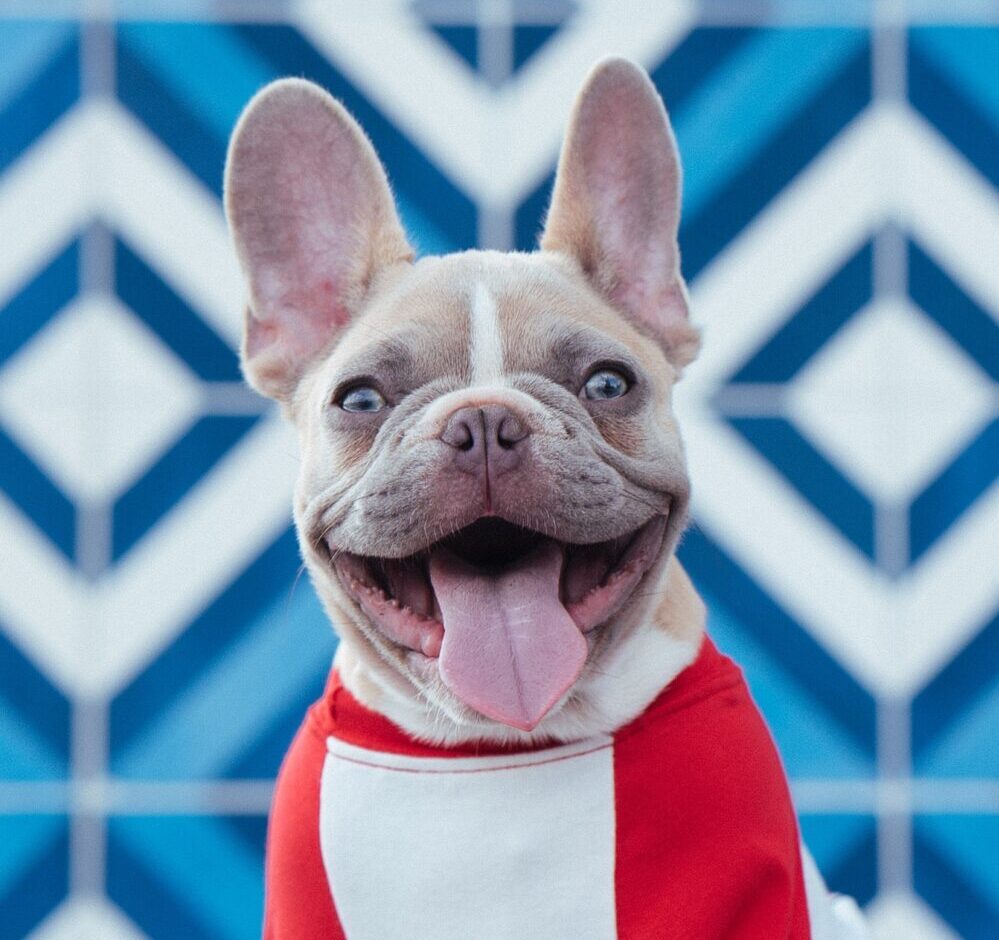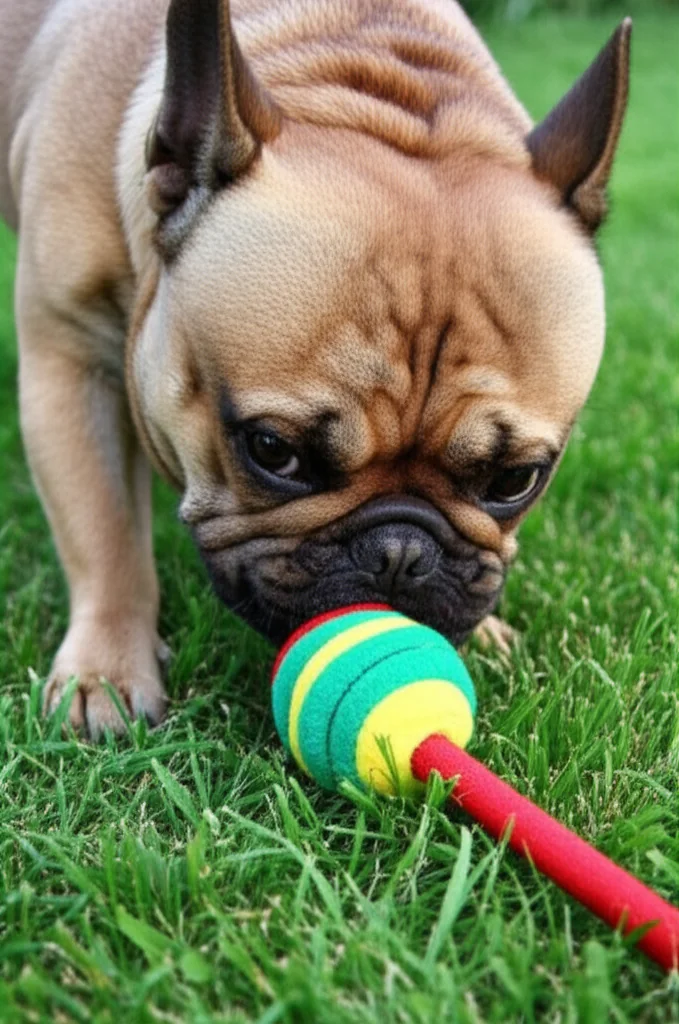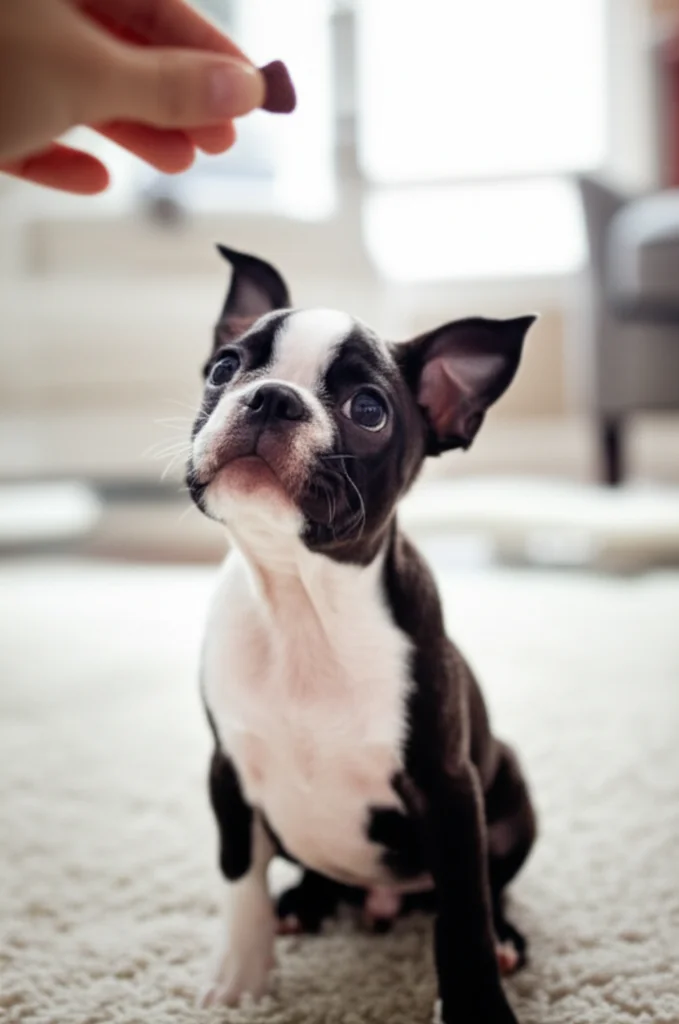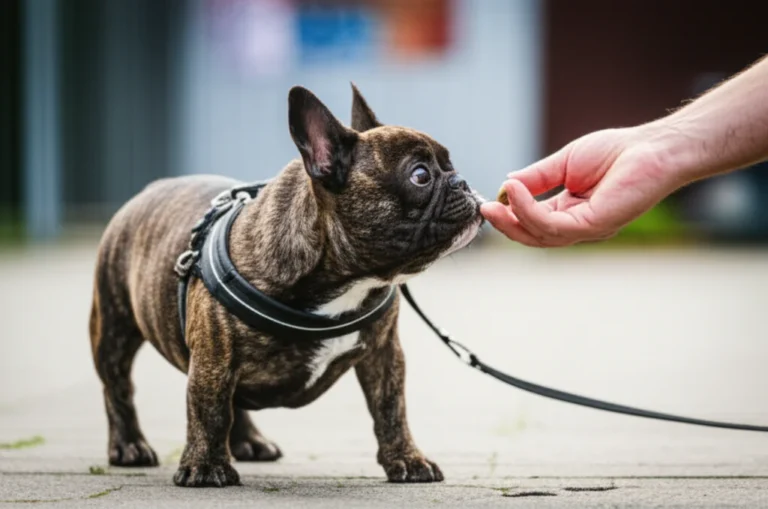Support our educational content for free when you purchase through links on our site. Learn more
How Do I Train a Boston Terrier to Behave Well? 🐾 10 Expert Tips (2025)
If you’ve ever wondered, “Are Boston Terriers just naughty?”—we’re here to bust that myth wide open! These charming little snub-nosed bundles of energy are anything but “just naughty.” They’re smart, affectionate, and sometimes stubborn, but with the right training approach, they can become the best-behaved companions you’ve ever had.
At Snubby Puppy™, we’ve spent years training Boston Terriers (and other snub-nosed breeds), discovering the secrets to unlocking their full potential. In this guide, we’ll walk you through 10 essential commands, tackle common behavior challenges, and share insider tips on leash walking, crate training, and socialization. Plus, we’ll reveal how nutrition and mental stimulation play a surprising role in shaping your Boston’s behavior. Ready to turn your spirited Boston Terrier into a polite, attentive, and happy pup? Let’s dive in!
Key Takeaways
- Positive reinforcement and consistency are the cornerstones of successful Boston Terrier training.
- Mastering 10 core commands like “sit,” “stay,” and “come” builds a solid foundation for good behavior.
- Understanding and managing common challenges—like barking, nipping, and stubbornness—helps keep training on track.
- Socialization and mental stimulation are just as important as physical exercise for a well-rounded Boston Terrier.
- Tailoring training to your Boston’s unique personality and health needs ensures lasting success and a happy relationship.
Table of Contents
- ⚡️ Quick Tips and Facts for Training Your Boston Terrier
- 🐾 The Dapper Dog’s Origin Story: A Brief History of the Boston Terrier
- 🧠 Understanding Your Boston Terrier’s Brain: Temperament, Traits, and Why They’re So Unique
- 🌟 The Snubby Puppy™ Philosophy: Positive Reinforcement is Your Best Friend
- 🛍️ Essential Gear for Boston Terrier Training Success
- 🎯 10 Core Commands Every Boston Terrier Should Master (and How to Teach Them!)
- 1. “Sit”: The Foundation of Good Manners
- 2. “Stay”: Building Patience and Impulse Control
- 3. “Come”: The Lifesaving Recall (Especially for Squirrel Chasers!)
- 4. “Down”: Relax and Respect Your Space
- 5. “Leave It”: Preventing Naughty Noses and Unwanted Snacks
- 6. “Drop It”: Trading Treasures for Treats
- 7. “Off”: Keeping Paws Where They Belong
- 8. “Heel”: Enjoying Polite Walks Together
- 9. “Watch Me”: Gaining Focus in Distracting Environments
- 10. “Go to Your Place”: A Calm Retreat on Command
- 🚶 ♀️ Mastering the Leash: Enjoying Stress-Free Walks with Your Boston Terrier
- 🏡 Crate Training Your Boston Terrier: Creating a Cozy, Safe Den
- 🚽 House Training Hacks: Potty Success for Your Boston Terrier
- 🛑 Tackling Common Boston Terrier Behavior Challenges Head-On
- Nipping and Biting: Redirecting Those Tiny, Sharp Teeth
- Excessive Barking: Quieting the Chatterbox (Without Muzzling Their Personality)
- Separation Anxiety: When Your BT Misses You Too Much (and Shows It!)
- The Infamous Boston Terrier Stubbornness: How to Win the Willpower War
- Resource Guarding: Sharing is Caring (Eventually!)
- 🤝 Socialization: Turning Your Boston Terrier into a Confident Canine Citizen
- 🎓 Advanced Training & Fun Activities for Your Smarty-Pants BT
- 🍎 Nutrition & Exercise: Fueling Good Behavior and a Happy BT
- ❤️Life is better with Boston Terrier❤️
- Conclusion: Your Well-Behaved Boston Terrier Awaits!
- Recommended Links
- FAQ: Your Most Pressing Boston Terrier Training Questions Answered
- Reference Links
Quick Tips and Facts for Training Your Boston Terrier
As we delve into the world of Boston Terrier training, it’s essential to start with some quick tips and facts. If you’re interested in learning more about Boston Terriers, check out our related article at https://www.snubbypuppy.com/boston-terrier/. For a deeper understanding of their behavior, visit our Behavior Analysis section.
Here are some key points to get you started:
- Positive Reinforcement: This training method is highly recommended for Boston Terriers, as it encourages good behavior without punishment.
- Consistency: Establish a routine and stick to it, as Boston Terriers thrive on predictability.
- Socialization: Socialize your Boston Terrier from an early age to help them become confident and calm in new environments.
- Exercise: Provide regular exercise to keep your Boston Terrier happy and healthy.
- Mental Stimulation: Engage your Boston Terrier’s mind with puzzle toys, obedience training, and interactive games.
The Dapper Dog’s Origin Story: A Brief History of the Boston Terrier

The Boston Terrier, with its distinctive “tuxedo” markings, has a rich history dating back to the 19th century. Originating in Boston, Massachusetts, this breed was developed from a combination of bulldogs and terriers. For more information on the history of Boston Terriers, visit the American Kennel Club website.
The Boston Terrier Personality: Smart, Stubborn, and Snuggly
Boston Terriers are known for their intelligent, affectionate, and sometimes stubborn nature. They are highly social dogs that thrive on human interaction and attention. As noted in a discussion on Facebook, “They are so smart, sometimes too smart for their own good!”
Common Boston Terrier Behavior Patterns: What to Expect
Boston Terriers can exhibit a range of behaviors, including:
- Energy bursts: Short periods of high energy, followed by relaxation.
- Playfulness: Boston Terriers love to play and have fun.
- Snoring: Due to their brachycephalic (flat-faced) skull structure, Boston Terriers can be prone to snoring.
- Shedding: Boston Terriers have a short, easy-to-maintain coat that sheds minimally.
The Snubby Puppy Philosophy: Positive Reinforcement is Your Best Friend
At Snubby Puppy, we believe in the power of positive reinforcement training. This approach focuses on rewarding good behavior, rather than punishing bad behavior. By using positive reinforcement, you can build a strong, trusting relationship with your Boston Terrier.
Why Force-Free Training Works Wonders for Boston Terriers
Force-free training is a gentle, effective approach that avoids punishment or negative reinforcement. This method is particularly well-suited for Boston Terriers, as they are sensitive dogs that respond well to positive feedback. For more information on force-free training, visit the International Association of Animal Behavior Consultants website.
Building Trust and a Strong Bond with Your BT
To build a strong bond with your Boston Terrier, focus on:
- Consistency: Establish a routine and stick to it.
- Positive Reinforcement: Reward good behavior with treats, praise, and affection.
- Socialization: Socialize your Boston Terrier from an early age to help them become confident and calm in new environments.
- Quality Time: Spend quality time with your Boston Terrier, engaging in activities that you both enjoy.
Essential Gear for Boston Terrier Training Success
To ensure successful training, you’ll need some essential gear. Here are some top picks:
- Treats: High-value treats, such as Zuke’s Mini Naturals, are perfect for rewarding good behavior.
- Leashes: A comfortable, adjustable leash, such as the Puppia Soft Padded Dog Leash, is essential for walks and training.
- Crates: A crate, such as the MidWest Life Stages Single-Door Dog Crate, provides a safe, comfortable space for your Boston Terrier to relax and feel secure.
- Interactive Toys: Interactive toys, such as the Kong Classic Dog Toy, provide mental stimulation and challenge your Boston Terrier’s problem-solving skills.
10 Core Commands Every Boston Terrier Should Master (and How to Teach Them!)
Here are the top 10 commands to teach your Boston Terrier, along with some tips on how to teach them:
- Sit: Hold a treat above your Boston Terrier’s head and move it backwards towards their tail. As they follow the treat with their nose, their bottom will lower into a sitting position.
- Stay: Start by having your Boston Terrier sit, then take a few steps back and say “stay.” Gradually increase the distance and time you’re away from your dog.
- Come: Choose a quiet area with minimal distractions and call your Boston Terrier by their name, followed by “come.” When they respond, reward them with treats and praise.
- Down: Lure your Boston Terrier into a downward position by holding a treat near their chest and slowly moving it down towards the ground.
- Leave It: Place a treat in front of your Boston Terrier and say “leave it.” If they try to take the treat, cover it with your hand and say “no.” When they leave the treat alone, reward them with a different treat.
- Drop It: Offer your Boston Terrier a treat in exchange for the item they’re holding onto.
- Off: When your Boston Terrier jumps up onto furniture, say “off” and guide them down to the floor with a treat.
- Heel: Practice walking with your Boston Terrier on a leash, rewarding them with treats and praise when they stay by your side.
- Watch Me: Hold a treat in front of your Boston Terrier’s nose and slowly move it upwards towards your face. As they follow the treat with their eyes, they’ll be focused on you.
- Go to Your Place: Designate a specific area, such as a mat or crate, as your Boston Terrier’s “place.” Encourage them to go to this area by using a treat and praise.
Mastering the Leash: Enjoying Stress-Free Walks with Your Boston Terrier
Walking your Boston Terrier on a leash can be a challenging task, but with practice and patience, you can master the leash and enjoy stress-free walks.
Stopping the Pull: Our Tried-and-True Techniques
To stop your Boston Terrier from pulling on the leash, try the following techniques:
- Stop and Start: When your Boston Terrier starts pulling, stop moving forward. When they come back to your side, start walking again.
- Change Direction: If your Boston Terrier is pulling, try changing direction. This will help them learn to follow you and not pull on the leash.
- Use Positive Reinforcement: Reward your Boston Terrier with treats and praise when they walk by your side without pulling.
Dealing with Distractions: Squirrels, Other Dogs, and Tiny Humans
When walking your Boston Terrier, you’ll inevitably encounter distractions such as squirrels, other dogs, and tiny humans. To deal with these distractions, try the following:
- Stay Calm: Remain calm and composed, even when your Boston Terrier gets excited.
- Use Positive Reinforcement: Reward your Boston Terrier with treats and praise when they remain calm and focused on you.
- Practice Desensitization: Gradually expose your Boston Terrier to the distraction, starting from a distance and rewarding them for remaining calm.
Crate Training Your Boston Terrier: Creating a Cozy, Safe Den
Crate training is an essential part of raising a well-behaved Boston Terrier. A crate provides a safe, comfortable space for your dog to relax and feel secure.
Making the Crate a Happy Place, Not a Punishment
To make the crate a happy place, follow these tips:
- Introduce the Crate Gradually: Introduce the crate gradually, starting with short periods and rewarding your Boston Terrier with treats and praise.
- Make it Comfortable: Add a comfortable bed or blanket to the crate to make it a cozy space.
- Use Positive Reinforcement: Reward your Boston Terrier with treats and praise when they enter the crate calmly.
Crate Training for Puppies vs. Adult Rescues
Crate training a puppy is different from crate training an adult rescue. Puppies require more frequent crate training sessions, while adult rescues may need more patience and understanding.
House Training Hacks: Potty Success for Your Boston Terrier
House training your Boston Terrier requires patience, consistency, and positive reinforcement. Here are some hacks to help you achieve potty success:
- Establish a Routine: Establish a routine of taking your Boston Terrier outside to the same spot at the same time each day.
- Use Positive Reinforcement: Reward your Boston Terrier with treats and praise when they eliminate outside.
- Watch for Signs: Watch for signs that your Boston Terrier needs to go outside, such as sniffing or circling.
The Potty Schedule: Consistency is Key
To establish a potty schedule, follow these tips:
- Take Your Boston Terrier Outside Frequently: Take your Boston Terrier outside to the same spot at the same time each day.
- Reward Good Behavior: Reward your Boston Terrier with treats and praise when they eliminate outside.
- Be Patient: Be patient and consistent, as house training can take time.
Dealing with Accidents: What NOT to Do
When dealing with accidents, it’s essential to know what not to do:
- Don’t Punish: Don’t punish your Boston Terrier for accidents, as this can create negative associations and make the training process more challenging.
- Don’t Scold: Don’t scold or yell at your Boston Terrier, as this can create anxiety and make the training process more difficult.
- Clean Up Thoroughly: Clean up accidents thoroughly to remove any remaining scent that might attract your Boston Terrier to the same spot again.
Bell Training: A Clever Communication Tool
Bell training is a clever communication tool that allows your Boston Terrier to communicate their needs to you. Here’s how to bell train your Boston Terrier:
- Introduce the Bell: Introduce the bell by ringing it before taking your Boston Terrier outside.
- Reward Good Behavior: Reward your Boston Terrier with treats and praise when they ring the bell to go outside.
- Be Consistent: Be consistent in your response to the bell, taking your Boston Terrier outside immediately when they ring it.
Tackling Common Boston Terrier Behavior Challenges Head-On
Boston Terriers can exhibit a range of behavior challenges, from nipping and biting to excessive barking and separation anxiety. Here are some tips for tackling these challenges head-on:
- Nipping and Biting: Redirect your Boston Terrier’s nipping and biting behavior by offering them a toy or treat instead.
- Excessive Barking: Address excessive barking by identifying the underlying cause and taking steps to address it, such as providing more exercise or mental stimulation.
- Separation Anxiety: Help your Boston Terrier overcome separation anxiety by gradually increasing the time you’re away from them and providing a comfortable, safe space for them to relax.
Nipping and Biting: Redirecting Those Tiny, Sharp Teeth
To redirect your Boston Terrier’s nipping and biting behavior, try the following:
- Offer a Toy or Treat: Offer your Boston Terrier a toy or treat instead of your skin.
- Use Positive Reinforcement: Reward your Boston Terrier with treats and praise when they exhibit gentle behavior.
- Be Consistent: Be consistent in your response to nipping and biting behavior, redirecting it every time it occurs.
Excessive Barking: Quieting the Chatterbox (Without Muzzling Their Personality)
To address excessive barking, try the following:
- Identify the Underlying Cause: Identify the underlying cause of the barking, such as boredom or anxiety.
- Provide More Exercise or Mental Stimulation: Provide more exercise or mental stimulation to address the underlying cause.
- Use Positive Reinforcement: Reward your Boston Terrier with treats and praise when they exhibit quiet behavior.
Separation Anxiety: When Your BT Misses You Too Much (and Shows It!)
To help your Boston Terrier overcome separation anxiety, try the following:
- Gradually Increase Time Away: Gradually increase the time you’re away from your Boston Terrier, starting with short periods and rewarding them with treats and praise.
- Provide a Comfortable, Safe Space: Provide a comfortable, safe space for your Boston Terrier to relax and feel secure.
- Use Positive Reinforcement: Reward your Boston Terrier with treats and praise when they exhibit calm behavior.
The Infamous Boston Terrier Stubbornness: How to Win the Willpower War
To win the willpower war with your Boston Terrier, try the following:
- Be Consistent: Be consistent in your training and expectations.
- Use Positive Reinforcement: Reward your Boston Terrier with treats and praise when they exhibit good behavior.
- Be Patient: Be patient and calm, as Boston Terriers can be strong-willed at times.
Resource Guarding: Sharing is Caring (Eventually!)
To address resource guarding, try the following:
- Gradually Introduce Sharing: Gradually introduce sharing by offering your Boston Terrier a treat or toy and then taking it away.
- Use Positive Reinforcement: Reward your Boston Terrier with treats and praise when they exhibit sharing behavior.
- Be Consistent: Be consistent in your response to resource guarding behavior, redirecting it every time it occurs.
Socialization: Turning Your Boston Terrier into a Confident Canine Citizen
Socialization is a critical part of raising a well-behaved Boston Terrier. Here are some tips for socializing your Boston Terrier:
- Start Early: Start socializing your Boston Terrier from an early age, ideally between 8 and 11 weeks old.
- Be Consistent: Be consistent in your socialization efforts, exposing your Boston Terrier to new people, places, and experiences regularly.
- Use Positive Reinforcement: Reward your Boston Terrier with treats and praise when they exhibit calm, confident behavior.
Puppy Classes and Beyond: The Benefits of Structured Socialization
Puppy classes and structured socialization can provide numerous benefits for your Boston Terrier, including:
- Improved Social Skills: Improved social skills and confidence in new environments.
- Reduced Anxiety: Reduced anxiety and fear-based behaviors.
- Increased Trainability: Increased trainability and responsiveness to commands.
Safe Introductions to Other Dogs, People, and New Environments
To introduce your Boston Terrier to other dogs, people, and new environments safely, try the following:
- Start with Small Steps: Start with small steps, such as introducing your Boston Terrier to one new dog or person at a time.
- Use Positive Reinforcement: Reward your Boston Terrier with treats and praise when they exhibit calm, confident behavior.
- Be Consistent: Be consistent in your introductions, gradually increasing the number of new dogs, people, and environments your Boston Terrier is exposed to.
Advanced Training & Fun Activities for Your Smarty-Pants BT
Once your Boston Terrier has mastered the basics, it’s time to move on to advanced training and fun activities. Here are some ideas:
- Agility Training: Agility training can provide a fun and challenging way to exercise your Boston Terrier’s mind and body.
- Nose Work: Nose work can provide a fun and engaging way to challenge your Boston Terrier’s sense of smell.
- Trick Training: Trick training can provide a fun and creative way to challenge your Boston Terrier’s mind and provide mental stimulation.
Agility, Nose Work, and Trick Training: Unleashing Their Potential
To unleash your Boston Terrier’s potential, try the following:
- Start with Basic Obedience: Start with basic obedience commands, such as sit, stay, and come.
- Gradually Increase Difficulty: Gradually increase the difficulty of the commands and activities, providing a fun and challenging way to exercise your Boston Terrier’s mind and body.
- Use Positive Reinforcement: Reward your Boston Terrier with treats and praise when they exhibit good behavior and master new skills.
Brain Games and Puzzle Toys: Mental Stimulation is Key
To provide mental stimulation for your Boston Terrier, try the following:
- Use Puzzle Toys: Use puzzle toys, such as the Kong Classic Dog Toy, to challenge your Boston Terrier’s problem-solving skills.
- Create Your Own Brain Games: Create your own brain games, such as hiding treats or toys, to provide a fun and engaging way to challenge your Boston Terrier’s mind.
- Rotate Toys and Activities: Rotate toys and activities regularly to keep your Boston Terrier engaged and interested.
Nutrition & Exercise: Fueling Good Behavior and a Happy BT
Nutrition and exercise play a critical role in fueling good behavior and a happy Boston Terrier. Here are some tips:
- Provide a Balanced Diet: Provide a balanced diet that meets your Boston Terrier’s nutritional needs.
- Exercise Regularly: Exercise your Boston Terrier regularly, providing a fun and challenging way to burn off energy and stimulate their mind.
- Monitor Progress: Monitor your Boston Terrier’s progress, adjusting their diet and exercise routine as needed to ensure they remain happy and healthy.
The Link Between Diet and Behavior: What You Feed Matters
The link between diet and behavior is complex, but research suggests that a balanced diet can have a positive impact on behavior. Here are some tips:
- Choose a High-Quality Food: Choose a high-quality food that meets your Boston Terrier’s nutritional needs.
- Avoid Fillers and By-Products: Avoid fillers and by-products, which can be difficult for your Boston Terrier to digest.
- Consider a Raw or Homemade Diet: Consider a raw or homemade diet, which can provide a more natural and balanced source of nutrition.
Tailoring Exercise to Your Boston Terrier’s Needs
To tailor exercise to your Boston Terrier’s needs, consider the following:
- Age and Health: Consider your Boston Terrier’s age and health, adjusting their exercise routine accordingly.
- Energy Level: Consider your Boston Terrier’s energy level, providing more or less exercise as needed.
- Mental Stimulation: Consider your Boston Terrier’s mental stimulation needs, providing a fun and challenging way to exercise their mind.
Conclusion: Your Well-Behaved Boston Terrier Awaits!

Training a Boston Terrier to behave well and listen to commands is a rewarding journey filled with moments of joy, patience, and discovery. These smart, affectionate, and sometimes stubborn little snub-nosed charmers respond best to positive reinforcement, consistency, and plenty of mental and physical stimulation. Remember, every Boston Terrier is unique, so tailor your approach to their personality and needs.
Throughout this guide, we’ve unpacked everything from the 10 core commands that form the foundation of good manners to tackling common behavior challenges like nipping, barking, and separation anxiety. We’ve also explored the importance of socialization, crate training, and how nutrition and exercise fuel good behavior.
If you’ve ever wondered how to stop that irresistible Boston Terrier stubborn streak or how to make leash walks a breeze, now you have a toolkit of expert-backed strategies to try. The key? Patience, consistency, and lots of love.
No single product or method is a magic bullet, but combining the right gear—like quality treats (think Zuke’s Mini Naturals), comfy harnesses (Puppia’s Soft Padded Leash), and engaging toys (Kong Classic)—with your dedication will set you and your Boston Terrier up for success.
So, are Boston Terriers just naughty? Not at all! They’re spirited, intelligent, and full of personality. With the right training and understanding, your Boston Terrier will be a well-mannered, happy companion who listens and loves you back unconditionally.
Recommended Links
👉 CHECK PRICE on:
-
Zuke’s Mini Naturals Dog Treats:
Amazon | Chewy | Zuke’s Official Website -
Puppia Soft Padded Dog Leash:
Amazon | Chewy | Puppia Official Website -
MidWest Life Stages Single-Door Dog Crate:
Amazon | Chewy | MidWest Homes for Pets -
Kong Classic Dog Toy:
Amazon | Chewy | Kong Company Official
Books on Boston Terrier Training and Behavior:
- The Boston Terrier Handbook by Linda Whitwam: Amazon
- Training the Best Dog Ever by Dawn Sylvia-Stasiewicz and Larry Kay: Amazon
- The Other End of the Leash by Patricia McConnell: Amazon
FAQ: Your Most Pressing Boston Terrier Training Questions Answered

What are the best training techniques for snub nose dogs like Boston Terriers?
Boston Terriers respond exceptionally well to positive reinforcement techniques—rewarding good behavior with treats, praise, or play. Avoid harsh corrections or punishment, as their sensitive nature can make them anxious or stubborn. Clicker training is especially effective, providing clear communication and marking desired behaviors. Consistency and patience are key, as Boston Terriers can be smart but sometimes willful.
Read more about “Are Boston Terriers Easy to Train and Housebreak? 10 Secrets Revealed! 🐾 (2025)”
How can I stop my Boston Terrier from barking excessively?
Excessive barking often stems from boredom, anxiety, or alertness. First, identify triggers and address them. Increase physical exercise and mental stimulation with puzzle toys or training sessions. Teach the “quiet” command by rewarding silence and redirecting attention. Avoid yelling, which can escalate barking. If anxiety is the cause, gradual desensitization and counter-conditioning help. For stubborn cases, consult a professional behaviorist.
Read more about “What Are the 10 Most Common Behavior Issues with Boston Terriers? 🐾 (2025)”
What commands are essential for training a Boston Terrier?
The 10 core commands every Boston Terrier should master include:
- Sit
- Stay
- Come
- Down
- Leave It
- Drop It
- Off
- Heel
- Watch Me
- Go to Your Place
These commands build a foundation for safety, manners, and communication. Teaching them with positive reinforcement ensures your Boston Terrier is both obedient and happy.
Read more about “Are Boston Terriers Hard to Potty Train? 7 Expert Tips 🐾 (2025)”
How long does it take to train a Boston Terrier to obey basic commands?
Training time varies depending on the dog’s age, temperament, and your consistency. Generally, Boston Terriers can learn basic commands within a few weeks of daily, short sessions (5-10 minutes). Patience is essential—some commands may take longer, especially if distractions are present. Remember, training is ongoing; reinforcing commands throughout your dog’s life keeps skills sharp.
Are there specific challenges when training snub nose dogs?
Yes! Snub nose (brachycephalic) breeds like Boston Terriers can have respiratory challenges that affect stamina during training sessions. Keep training sessions short and in cool environments to avoid overheating or breathing difficulties. Their facial structure can also make them prone to stubbornness, so patience and gentle motivation are crucial. Additionally, their expressive faces mean they respond well to positive emotional cues.
Read more about “Are Boston Terriers Expensive? Unpacking 10 Cost Factors 🐾 (2025)”
What positive reinforcement methods work best with Boston Terriers?
High-value treats like small pieces of cheese, cooked chicken, or specialized dog treats (e.g., Zuke’s Mini Naturals) work wonders. Pair treats with enthusiastic verbal praise and petting. Clicker training can enhance clarity and motivation. Vary rewards to keep your Boston Terrier interested and avoid treat fatigue. Always reward immediately to reinforce the connection between behavior and reward.
Read more about “Boston Terrier Secrets Unleashed: The Ultimate 2025 Guide 🐾”
How do I socialize my Boston Terrier to improve its behavior?
Start socialization early—ideally between 8 and 11 weeks of age. Introduce your Boston Terrier to a variety of people, dogs, environments, sounds, and experiences in a controlled, positive way. Use treats and praise to reward calm, confident behavior. Puppy classes are excellent for structured socialization. For adult dogs, gradual exposure and patience help overcome fear or anxiety. Consistency is key to building a well-rounded, confident dog.
Reference Links
- American Kennel Club (AKC) Boston Terrier Breed Info: https://www.akc.org/dog-breeds/boston-terrier/
- International Association of Animal Behavior Consultants (IAABC): https://iaabc.org/
- Zuke’s Official Website: https://www.zukes.com/
- Puppia Official Website: https://puppiaus.com/
- MidWest Homes for Pets: https://www.midwesthomesforpets.com/
- Kong Company Official Website: https://www.kongcompany.com/
- Reddit Discussion: Are Boston Terriers just naughty? : r/BostonTerrier
https://www.reddit.com/r/BostonTerrier/






